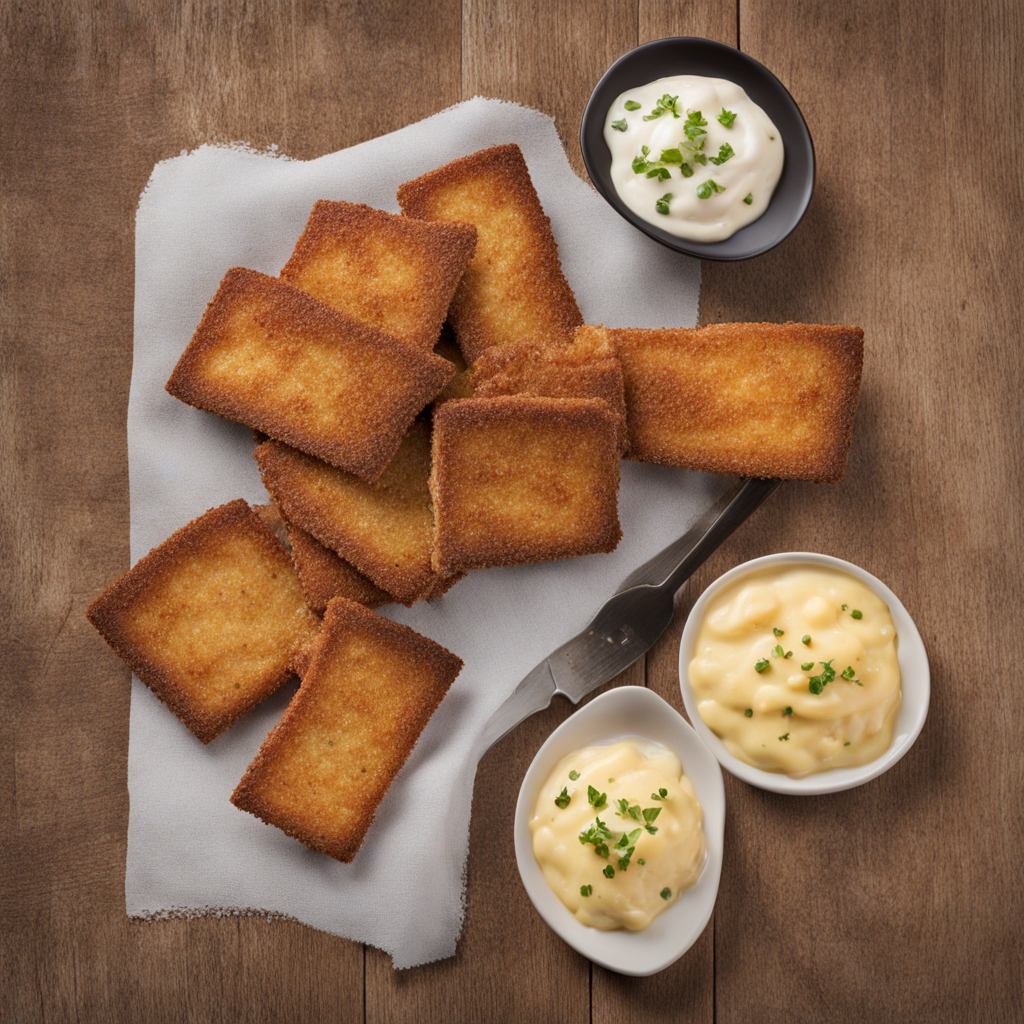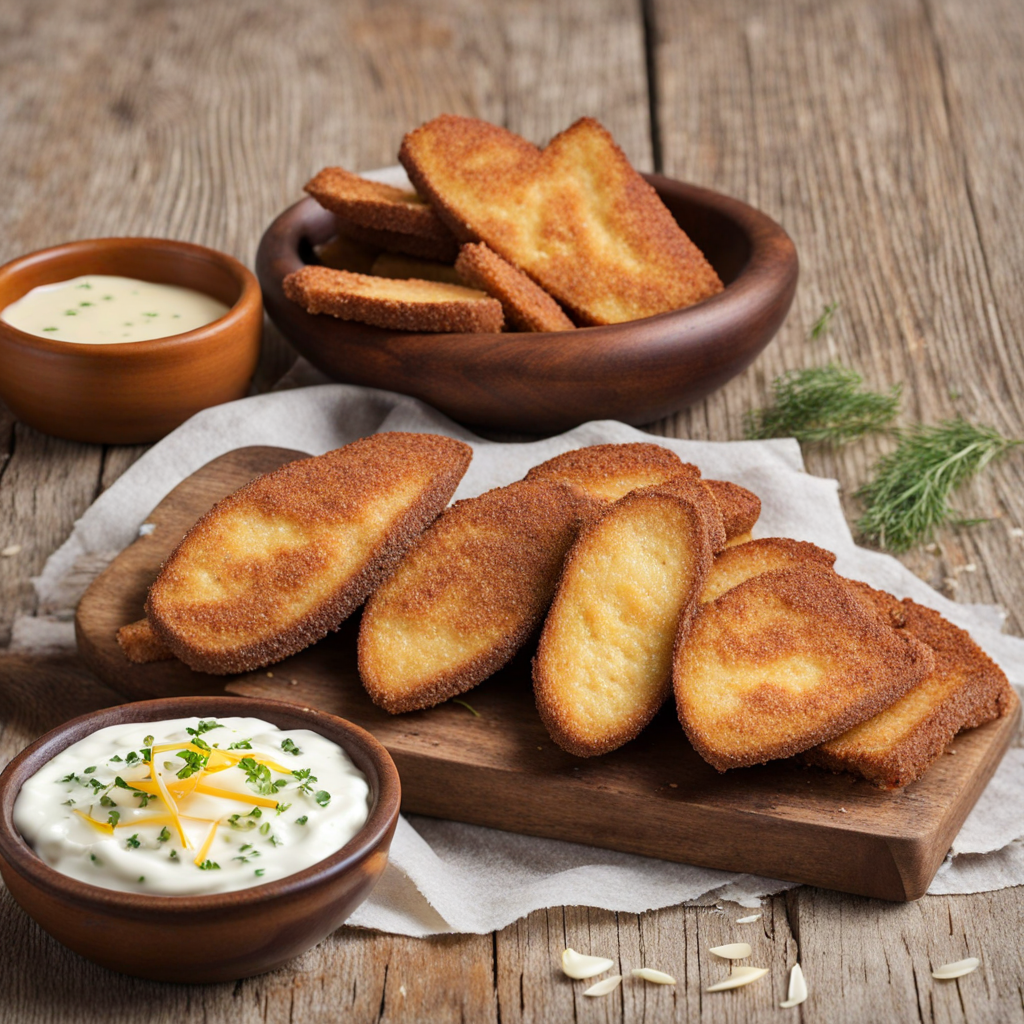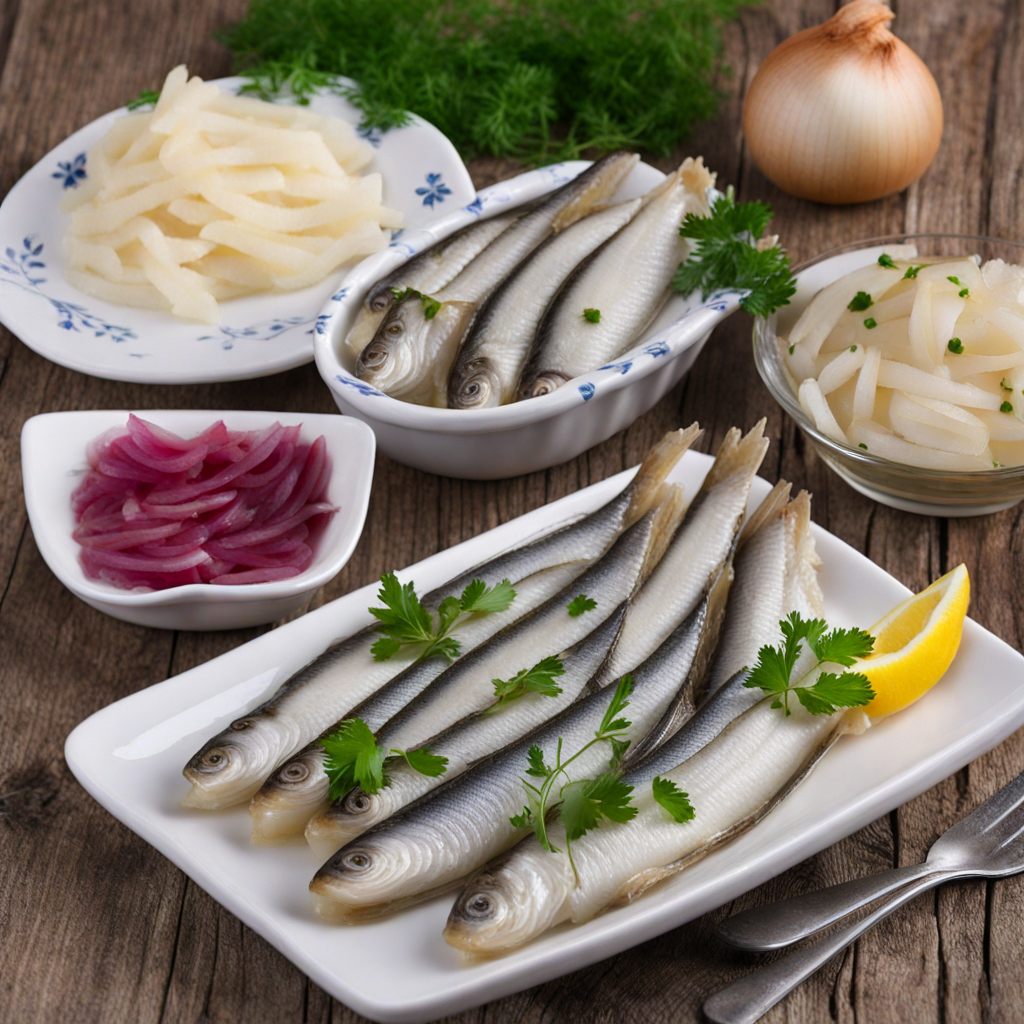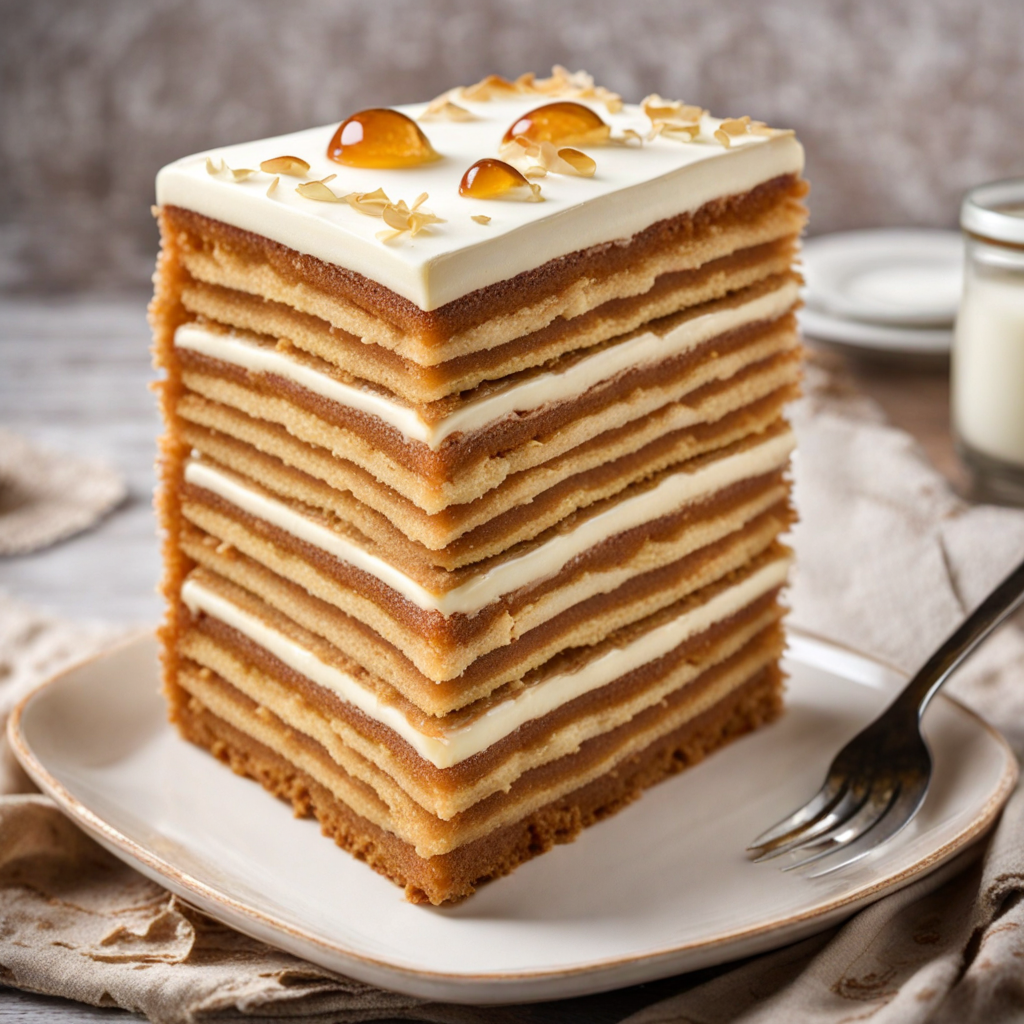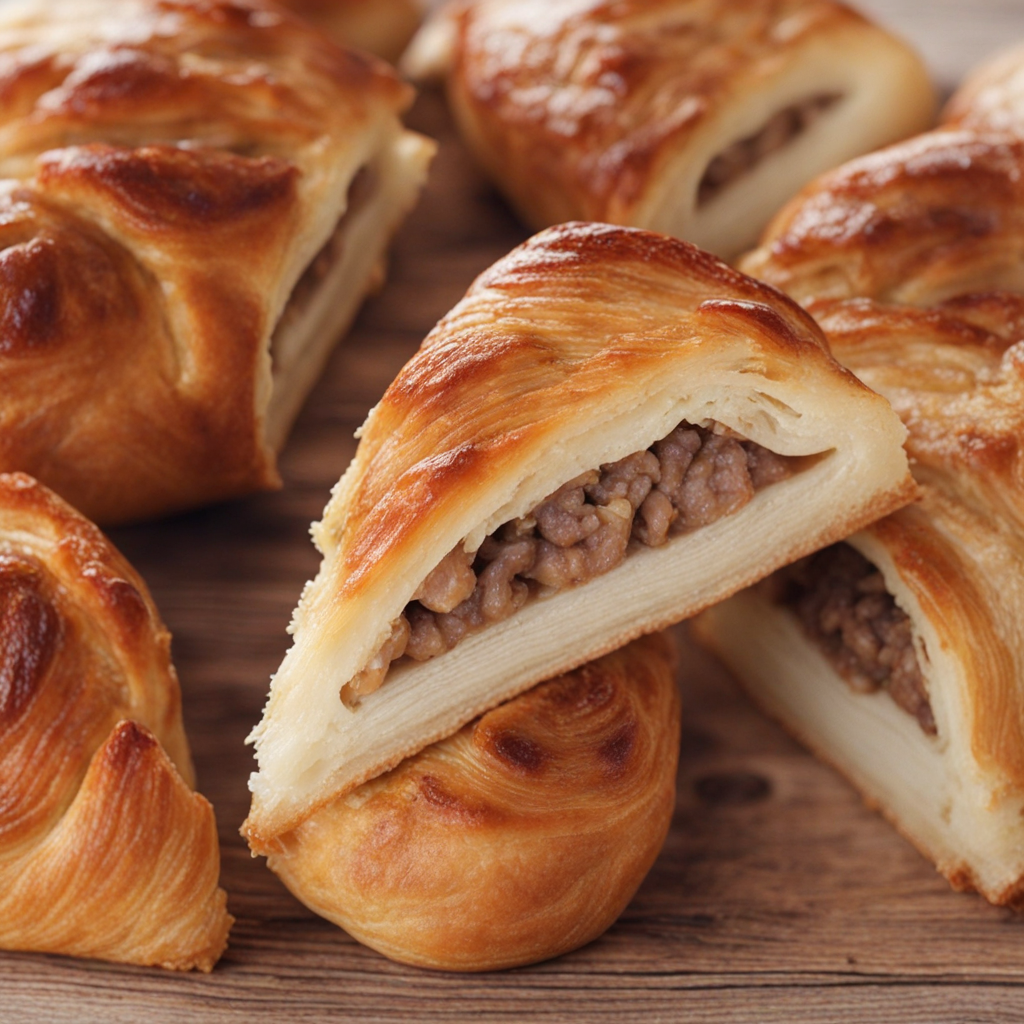Fried Bread with Garlic
Kepta duona, which translates to "fried bread" in Lithuanian, is a beloved snack that embodies the rustic simplicity and culinary traditions of Lithuania. This dish typically consists of dark rye bread, which is a staple in Lithuanian cuisine, cut into sticks or cubes and then fried until golden and crispy. The origins of kepta duona can be traced back to the agrarian lifestyle of the Lithuanian countryside, where it was common to make use of leftover stale bread. This practice reflects the resourcefulness of the Lithuanian people, as they sought to minimize waste and maximize flavor. The flavor profile of kepta duona is a delightful amalgamation of savory and slightly nutty notes, primarily due to the use of rye bread. When fried, the bread develops a satisfying crunch on the outside while remaining chewy on the inside. The addition of garlic, which is often used to season the fried bread, imparts a robust, aromatic quality that elevates the dish. Some variations also include a sprinkle of caraway seeds, which add a unique herbal undertone that complements the earthiness of the rye. Traditionally, kepta duona is served with a side of melted cheese or a creamy dip, enhancing the overall taste experience. The preparation of kepta duona is straightforward yet requires attention to detail to achieve the perfect texture. First, day-old rye bread is sliced into uniform sticks or cubes, ensuring even cooking. The bread pieces are then lightly fried in oil or butter until they reach a
How It Became This Dish
The History of Kepta Duona: Lithuania's Beloved Fried Bread Introduction Kepta duona, often translated as "fried bread," is a cherished staple of Lithuanian cuisine, known for its simplicity, heartiness, and versatility. This beloved dish, typically made from dark rye bread, is not only a favorite snack or appetizer but also a symbol of Lithuanian culinary heritage. Its history is intertwined with the agricultural practices, social customs, and cultural evolution of Lithuania, reflecting the nation's resilience and creativity. Origins of Kepta Duona The roots of kepta duona extend deep into Lithuania's agricultural past. Rye has long been a vital crop in the region, thriving in the cooler, harsher climates of the Baltic states. This hardy grain became a staple for the Lithuanian diet, with dark rye bread emerging as the primary form of sustenance. The tradition of preserving bread was essential in a country where long winters necessitated food preservation techniques. Kepta duona likely began as a method of utilizing leftover or stale bread, a common practice in many cultures to minimize waste. The bread was cut into strips or cubes, then fried in oil or lard, transforming the hard, chewy texture into something crispy and flavorful. This culinary adaptation not only provided a way to salvage old bread but also created a distinctive snack that could be easily shared among family and friends. Cultural Significance Kepta duona holds a special place in Lithuanian culture, often associated with comfort, hospitality, and communal gatherings. Traditionally, it is seasoned with garlic and served with a sprinkle of salt, sometimes accompanied by cheese, dips, or beer, making it a popular choice for social settings. In Lithuania, it is common to enjoy kepta duona while watching sports or during family celebrations, reinforcing its status as a snack of togetherness. The dish is frequently featured in Lithuanian festivals and markets, showcasing its role in national identity. Food can be a powerful medium for expressing cultural pride, and kepta duona embodies the essence of Lithuanian traditions. Its simplicity and reliance on locally sourced ingredients underscore the importance of sustainability and self-sufficiency in Lithuanian culture. Development Over Time Throughout the centuries, the fundamental recipe for kepta duona has remained relatively unchanged, though variations have emerged based on regional preferences and available ingredients. The advent of modern cooking techniques, such as deep frying and air frying, has allowed for quicker preparations while still retaining the dish's authenticity. As Lithuania gained independence from the Soviet Union in 1990, there was a resurgence of interest in traditional foods and culinary heritage. This was not merely a nostalgic return to the past but a celebration of identity and sovereignty. Restaurants began to feature kepta duona on their menus, often elevating it to a gourmet level, pairing it with artisanal cheeses, homemade dips, or unique flavorings. The dish transformed from a humble street food into a recognized element of Lithuania’s gastronomic scene. Moreover, with globalization, kepta duona has found its way into the international culinary landscape. Chefs from outside Lithuania have embraced the dish, experimenting with its preparation and presentation while maintaining its core essence. This cross-cultural exchange has introduced new audiences to kepta duona, further solidifying its status as a culinary ambassador for Lithuania. Modern Interpretations In contemporary Lithuanian cuisine, kepta duona is frequently served in new and innovative ways. Chefs play with the original concept, experimenting with different types of bread, including sourdough or even gluten-free options, adapting the dish to cater to changing dietary preferences. The traditional garlic seasoning remains popular, but additional toppings and dips have emerged, such as various cheeses, herb-infused oils, and even spicy sauces. Restaurants often serve kepta duona as part of a larger tasting menu that highlights the rich tapestry of Lithuanian gastronomy. This modern approach not only showcases the dish's versatility but also educates diners about its historical context and cultural significance. Conclusion Kepta duona is more than just a snack; it is a culinary emblem of Lithuania, reflecting the nation's agricultural roots, cultural values, and historical evolution. From its origins as a humble method of utilizing leftover bread to its status as a beloved food enjoyed by locals and visitors alike, kepta duona embodies the spirit of Lithuanian resilience and creativity. As Lithuania continues to navigate the complexities of modernity while honoring its rich traditions, kepta duona remains a vital part of the nation’s identity. It serves as a reminder of the importance of community, sustainability, and the simple joys of sharing food with others. Whether enjoyed at a family gathering, a local tavern, or a fine dining establishment, kepta duona is a testament to the enduring legacy of Lithuanian culinary heritage, inviting all who taste it to partake in a piece of Lithuania's story.
You may like
Discover local flavors from Lithuania


